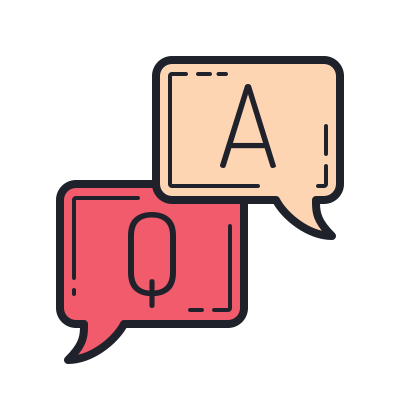Email Like a Pro: Writing Business Emails That Get Read and Respected
Why Professional Emails Still Matter
Despite the rise of instant messaging and collaboration tools, email remains the cornerstone of professional communication. It’s where first impressions are often made, deals are confirmed, and relationships are maintained. Writing emails that are clear, respectful, and action-oriented can elevate your professional reputation and help you communicate with greater influence and confidence.
An email that is sloppy, confusing, or too casual can damage credibility. A well-crafted email, on the other hand, demonstrates attention to detail, respect for the recipient’s time, and command of your message. In fast-paced business environments, knowing how to email like a pro is not just a courtesy — it’s a competitive edge.
Start With a Clear and Relevant Subject Line
The subject line is your first impression. It determines whether your message gets opened or ignored. A vague or overly general subject can make your email feel unimportant, while a precise and relevant one helps your reader immediately understand the context.
Avoid subject lines like “Question” or “Quick Chat?” Instead, write “Proposal Feedback Requested by Friday” or “Next Steps After Marketing Review.” Clear subject lines save time and set expectations, which makes people more likely to respond.
If your email is time-sensitive or requires action, indicate that respectfully: “Action Required: Budget Approval Needed by July 30.”
Use a Professional Greeting
The tone of your greeting sets the stage for the rest of the message. Begin with the recipient’s name, and when possible, use a level of formality appropriate to your relationship and industry.
“Dear Ms. Carter” is suitable for a formal setting, while “Hi James” works well for peers or colleagues you interact with frequently. Avoid overly casual greetings like “Hey” unless the culture of your workplace specifically encourages it.
If you’re emailing a group, address them inclusively: “Hello Team,” or “Hi All,” depending on the context.
Get to the Point — But Warmly
People are busy, and lengthy introductions can dilute your message. After a brief greeting, state your purpose within the first few lines. Be polite and direct. For example:
“I’m reaching out to confirm your availability for the upcoming Q3 strategy meeting.”
or
“Following our last conversation, I’ve attached the updated report with the requested edits.”
Clarity and efficiency are key. At the same time, avoid sounding robotic. Add a line that acknowledges the reader, such as “Hope your week is going well” — but avoid filler that doesn’t support your message.
Structure for Readability
Professional emails should be easy to scan. Break long paragraphs into shorter ones. Use bullet points or numbered lists when covering multiple items. Include bolded headers or short subheadings if the email is lengthy.
Spacing is important — a wall of text can feel overwhelming and lead readers to skim or miss key points. Use line breaks to separate ideas and keep formatting clean.
Well-structured emails show respect for your reader’s time and make it easier for them to engage with your content.
Match Tone to Purpose
The tone of your email should reflect the purpose and your relationship with the reader. Avoid excessive formality if the situation calls for warmth, and avoid being too casual when discussing serious topics.
Be polite and professional, even if you’re disagreeing. Use language like “I’d like to offer an alternative perspective” instead of “You’re wrong about this.” Aim for clarity without sounding abrupt, and friendliness without sacrificing authority.
When in doubt, choose a slightly more formal tone — it’s easier to soften professionalism than to repair over-familiarity.
Mind Your Grammar, Spelling, and Punctuation
Errors in grammar or spelling can quickly undermine your professionalism, especially in business communication. They may suggest carelessness or a lack of attention to detail — not the impression you want to leave.
Use tools like spell check, Grammarly, or even reading aloud to catch mistakes. Proper punctuation also matters. A message without periods or with overly casual punctuation (like “!!!”) may not be taken seriously.
Even in fast-paced environments, taking one minute to proofread can save misunderstandings and maintain your credibility.
Know When and How to Use CC and BCC
Using CC (carbon copy) and BCC (blind carbon copy) appropriately is part of professional etiquette. Use CC to keep others in the loop, but avoid copying unnecessary recipients — it adds clutter and may create confusion about responsibility.
Use BCC carefully. It’s useful for protecting privacy in group messages or for silently informing someone, but it should never be used to deceive. If you need to loop someone in confidentially, consider forwarding the message separately after it’s sent.
Close with Purpose and Politeness
End your email with a clear next step or call to action. Don’t leave the reader wondering what’s expected. For example:
“Please confirm your availability by Tuesday.”
“Let me know if you’d like to proceed with option B.”
“I’m happy to jump on a call if you’d prefer to discuss further.”
Choose a sign-off that matches the tone of your message. “Best regards,” “Sincerely,” and “Thank you” are safe, respectful closings. “Cheers” or “Thanks!” may suit more informal messages, but always match the professional setting.
Follow Up Without Being Pushy
If you haven’t received a response within a few business days, it’s okay to follow up — but do so tactfully. A polite follow-up message might look like:
“Just following up on the below — let me know if you need any additional information from me.”
Avoid sounding impatient or accusatory. A respectful nudge keeps the conversation alive without pressuring the recipient.
Email Is a Reflection of You
Every email you send is a reflection of your attention to detail, communication style, and professionalism. Whether you’re writing to a colleague, client, or supervisor, treating your email like an important message — even if it’s brief — builds trust and strengthens relationships.

